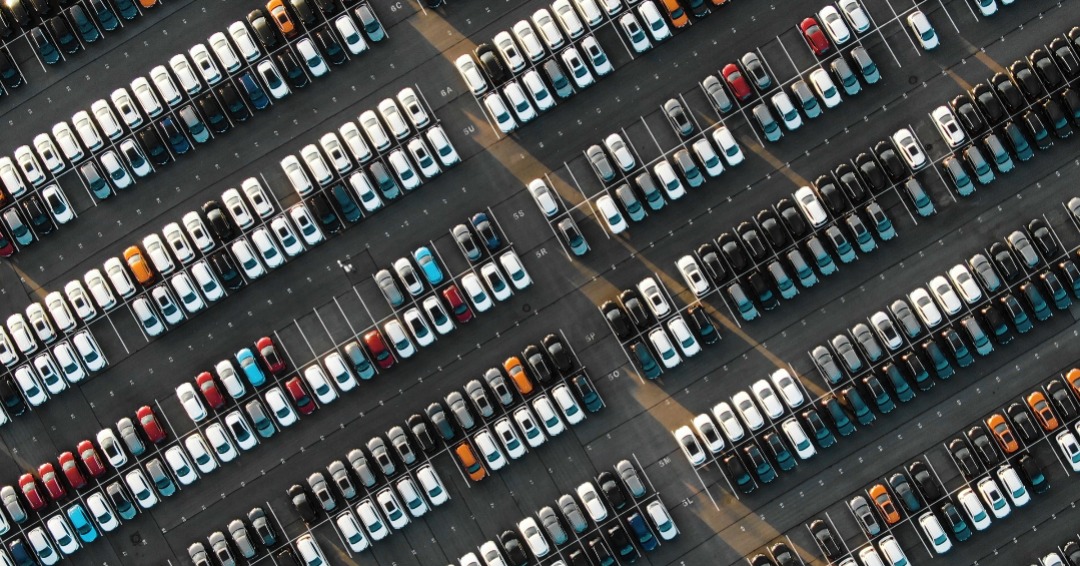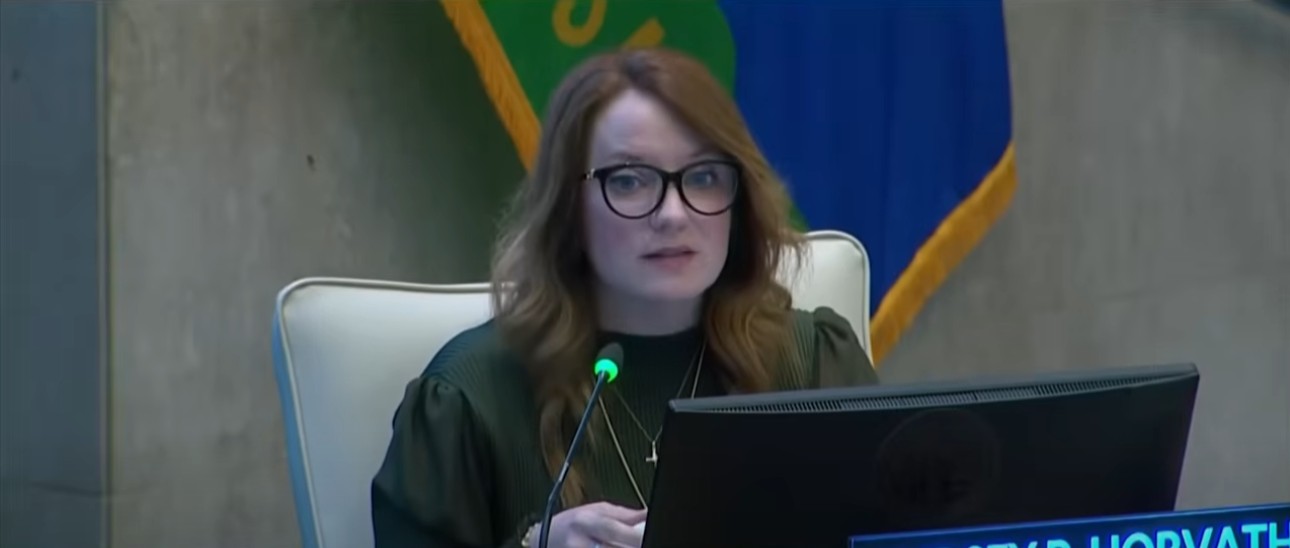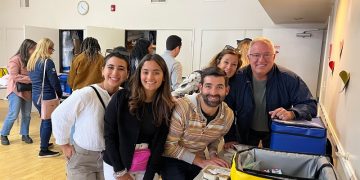
Last week’s SMa.r.t. article described the collision of two new State mandates: the first requiring the construction of 9000 new units in Santa Monica (corresponding to about a 20% population increase in the next 8 years), and the second preventing the City from requiring any parking for all those new units. This will create a massive parking crisis in your city (not to mention increased gridlock). See https://smmirror.com/2023/05/sma-r-t-column-parking-wars/
The car is (unfortunately) here to stay
Just because the State is forbidding these new residents from having cars, people who can afford cars will not abandon them because their cars provide, in spite of their drawbacks, exceptional speed, convenience, safety and cultural value. Simply put the car will not “go away” until there are real transportation alternatives of equal speed, convenience, safety and cultural value.
There are several ways to try to force people from their cars: make them more costly (eg. expensive to park, higher gas tax, etc.), make them more inconvenient or amp up fast, safe alternatives, or reduce their cultural cache, or some combination of the above. Resisting these anti-car pressures are that wealthier residents always have the means to work around any instituted inconveniences, that lenders may not fund projects that don’t have sufficient parking (see the Capital One building at 4th and Broadway), that electric car owners erroneously think there is no ecological cost to their cars, and that new buildings will not attract new pricy tenants (or keep them) if there isn’t sufficient parking (this applies even to affordable housing projects such as 1626 Lincoln).
King car will not be dethroned easily. This historical car tug-of-war will take time to resolve even with the help of parking gurus like Dr. Donald Shoup. In the. meantime car numbers will inexorably increase simply by the State mandated 20% population increase. Regardless of what we do in the long run, we will need to find places to park them in the immediate future.
Some people may cleverly think we should let the parking crisis get really bad to force the car abandonment earlier but that’s a parallel delusion to the State’s mad idea that if we don’t require parking, the car will vanish. What will actually happen, when the parking situation gets really ugly and the equity issues become unavoidably glaring, is that we will be forced by an angry populace, to institute the very same parking changes we could be implementing today but then at a greater cost and with less flexibility.
Toward a more efficient City
Parking is not free. Whether paid for by developers in their construction budgets, subsided by the City via parking structures, or paid for by drivers circling for blocks looking for parking, someone has to pay the substantial cost of stabling your horse. Because the developers of parking deficient projects will be dumping their perking load and its avoided costs on your public streets, it’s incumbent on the City to be ready to manage this additional parking load. The following ten initiatives would assist in ameliorating this worsening parking crisis. Certainly, we could be instituting these initiatives even without an impending crisis. Essentially we need to make the City more efficient in managing both its existing and increased parking load. To do this we need to both increase supply and reduce demand and ideally both.
Increasing parking supply
1. Starting with low-hanging fruit, we can easily increase parking supplies in streets that are already ultra-wide (approx. 53’) by turning one side of the street to perpendicular parking as has been done on, for example, 9th and 10th streets between Michigan and Pico. Streets, where this could be done, include Hollister between Main and 3rd or 19th Street between Wilshire and Arizona. The side with the least number of curb cuts (driveways) should be the side that gets the perpendicular parking. Under optimal conditions, this would increase the number of cars on that street by about 50%.
2. A slightly more expensive effort would be to create one-way streets with diagonal parking on both sides. Ideally, this would be done on quiet streets with alleys behind and thus very few curb cuts. These one-way streets should be balanced by adjacent street(s) going in the opposite direction. Under optimal conditions, this would increase the number of cars on a street by about 75%. These re-stripped, redirected streets should be done prioritizing wherever any block gets any new building (eg an Accessory Dwelling Unit) that has substandard parking.
Small cars before no cars
3. We will get to small cars before getting to no cars. Using smaller parking spaces would help recapture “leftover” spaces in parking layouts. Today the City has two parking sizes standard (18’ long) and compact(15’ long ). But a certain number of smaller cars are now penetrating the market: Mini Cooper, Fiat 500 and Le Smart (named after a famous column in the SM Mirror). These cars are all about 12’ long. Over time we expect the percentage of very small cars to grow since for in-urban use, glorified golf carts work just fine. To increase profits, Detroit’s current electrification of cars is mistakenly directed toward gigantism (all electric SUVs). But over time, as small all-electric foreign imports eat Detroit’s lunch (again), we will see more buyers getting smaller all-electric cars that are both more economical to buy/operate and much easier to park. The length saved by 3’ sounds trivial but when added to the typical backup distance saving of another 3’, you get about another third standard car length saved. These extra savings are very useful in recapturing and “monetizing” fractional leftover spaces. The percentage of these ultra-small parking spaces should be selected by the percentage of such approximately 12 long cars that are currently registered in Santa Monica. While initially small, that percentage will be increasing over time.
The motherlode of the parking
4. The mother lode of “surplus” parking is actually all the empty parking spaces in the acres of empty office buildings. This not only affects Santa Monica, but currently most cities have exceptionally high office vacancies: New York at 16%, Los Angeles at 25%, and San Francisco at 31%. Not all office buildings even have parking, but many of them particularly if built in the last half-century, often have more parking available than is required for the same square footage of residential uses. Converting office buildings with existing parking to full or partial residential uses often has important secondary benefits. This conversion often happens in office buildings that, if newer, are already fully handicap accessible, and no residents are evicted (existing apartments demolished) compared to typical new construction, it can be done faster than new housing construction, they are often along boulevards with abundant services (favoring pedestrian trips), it can reactivate collapsing downtown cores, and finally it improves our deleterious job-housing imbalance. Because of these manifest benefits, the City should incentivize these conversions by amending the zoning code to eliminate any constraints to such conversions but also to eliminate all City fees as an additional accelerant.
5. Finally at the top of the expense scale, imagine a large networked zone, such as all of downtown Santa Monica, entirely saturated with smart (again named after a famous column in the SM Mirror) parking meters that can continually announce to the web their current price and availability. Much like the pricing of airline seats, these smart parking meters near to much-desired venues would be pricier than at the periphery of less-desired destinations. Upon arriving in the networked area the driver could use an app on their phone (or automatically through their car’s onboard screen) to see nearby parking options, say ranging from $10.00 to say $0.50 or even free. They would then select the street at their price point to find their optimally priced parking space. The continually updating price profile of each street would be optimized to ensure that each block/street, parking lot, or structure would always have at least one parking space always available. Over time regular drivers would learn which area at which time to go to (probably even without using the app) so that they would not waste time driving in circles. This futuristic system would allow drivers to see the real cost and value of their time and parking usage and would work in an environment of both regular and self-driving cars (which would automatically be billed to their credit/debit cards). This system “increases” supply by quickly increasing drivers’ knowledge of where parking is still available.
Decreasing parking demand
6. Build out the City’s Bike Action Plan (without the errors of the 17th Street bike path) to increase the percentage of drivers feeling safe enough to use bikes.
7. In areas of parking scarcity, when carless residents need a short-term rental car occasionally, it will be very beneficial to institute a system of distributed lots where cars can easily be picked up and dropped off. Think Zip Car. A typical fenced surface 50X150 lot could store about 38-40 cars on demand (via the rear alley) reserved, paid, and accessed online. These eventually attendant-less lots would become the deposits for self-driving cars freeing them somewhat from the need to be within walking distance since the car can come to you. Perhaps the Big Blue bus could operate these as a public utility service.
8. Study the option of making the big Blue Bus free by finding fair funding sources to make this feasible if possible.
9. This will be controversial, but any new project that has substandard parking should not be allowed to get preferential parking in any zone. Preferential parking zones are designed to protect neighborhoods from the impact of the adjacent under-parked areas (eg. commercial streets, the college, etc.). Preferential parking zones will probably increase in size as residents feel the impact of 9000 new units. They were not instituted to facilitate freeloading developers and are typically already saturated. This prohibition would encourage developers to rent to car-free tenants (often seniors?), add sufficient parking on site, or locate additional parking nearby.
10. And finally, most importantly, think and implement ways to use your car as little as possible. All these technical tweaks are bound to fail without a motivated citizenry. We don’t have to wait for the future: your actions today can create the parking future you want today.
By Mario Fonda-Bonardi AIA
S.M.a.r.t Santa Monica Architects for a Responsible Tomorrow
Thane Roberts, Architect, Robert H. Taylor AIA, Architect, Dan Jansenson, Architect & Building and Fire-Life Safety Commission, Samuel Tolkin Architect & Planning Commissioner, Mario Fonda-Bonardi AIA & Planning Commissioner, Michael Jolly, AIR-CRE.
For previous articles see www.santamonicaarch.wordpress.com/writing













